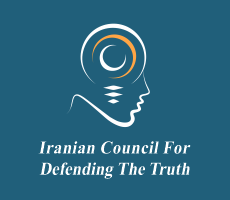The recent confirmation that Iran and Saudi Arabia have been holding talks on improving their tense relations inspired optimism that some progress in this respect might eventually be achieved. It’s still too early to say for certain whether that’ll happen, but in the event that it does, this outcome would greatly contribute to regional stability. The challenge, however, would be in maintaining this “new normal” and ensuring that Saudi Arabia doesn’t once again unilaterally provoke tensions with Iran. It’s here where China could play a major role in assisting its top two regional partners.
China and Iran clinched a 25-year strategic partnership earlier this year which reports indicated could see the People’s Republic investing upwards of $400 billion into the Islamic Republic across the coming quarter-century. China is also expected to continue pioneering overland connectivity with Iran through its China-Central Asia-West Asia Economic Corridor (CCAWEC) and the so-called “Persian Corridor” via Tajikistan and Afghanistan. As for Chinese-Saudi ties, they’re undergirded by the energy trade and Beijing’s interest in participating in Riyadh’s Vision 2030 socio-economic modernization program.
Iran and Saudi Arabia therefore occupy pivotal positions when it comes to China’s Belt & Road Initiative (BRI) vision for West Asia. Beijing thus has an interest in ensuring that any potential rapprochement between these regional rivals is maintained. To this end, China could propose a trilateral framework or forum between itself, Iran, and either Saudi Arabia or the entire Gulf Cooperation Council (GCC) in which Riyadh participates. This could enable Beijing to better coordinate its regional BRI projects and work towards having them connect with one another so as to create a regional economic community.
What’s envisioned by this is that China’s apolitical and economically driven engagement with West Asia could contribute to Iran and Saudi Arabia coming to have equal stakes in the other’s stability. This wouldn’t just be rhetorical but substantive. In practice, China’s BRI investments in both countries could be linked together, with Beijing forming the common economic bond between these two (hopefully by then former) rivals. In such a situation, Saudi Arabia would be disinclined to destabilize Iran since doing so would adversely affect their shared Chinese partner, including potentially even its in-country projects.
This proposed solution is novel in the sense that it has no precedent. Never before has there been any credible chance of an economic superpower investing in both Iran and Saudi Arabia, let alone with a view towards bringing them together into a larger regional economic community. That’s not to say that this proposal will succeed since it depends both on the outcome of the ongoing Iranian-Saudi talks as well as the political will of their leaderships to focus on strengthening Chinese-led economic connectivity between their countries, but any progress in this respect would greatly stabilize the Persian Gulf Region.


Good idea. Could work.